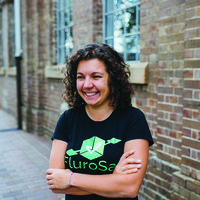Energy & sustainability
Rebecca Saive
She found a way to make solar panels cheaper and more efficient.

Latin America
Moisés Venegas
Bringing electricity and Internet to rural and impoverished areas with solar panels

Global
Anastasia Volkova
Her platform uses remote sensing and other techniques to monitor crop health—helping farmers focus their efforts where they’re most needed.

Asia Pacific
Dongliang (Donny) Chao
Finding safe, low-cost, and scalable energy storage new battery technologies

China
Chong Liu
Extracting substantial mineral resources from the ocean
